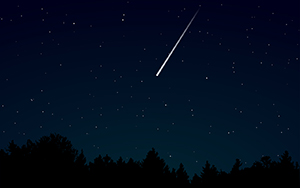The Home Made Radio Telescope
 Share on Facebook
Share on Facebook
 (or how to drive yourself crazy)
(or how to drive yourself crazy)
Last month I finished by saying I have been building a simple radio telescope. It's not as crazy as it sounds, amateur astronomers have a long history of building things for themselves. My generation growing up after the war had little choice, but it still seems to be a normal thing to do. Club member Mark built a very effective star tracker not long ago.
Ten years ago, the receiver needed was a big expensive piece of equipment, but, as I mentioned last month we can now buy a little gadget that plugs into a computer, a Software Dependent Radio (sdr) and with some effort this acts as a receiving station for a radio telescope complete with digital readout and lots of impressive numbers on the screen.
I read a few tutorials and watched a couple of YouTube videos about it all, then my wife bought me an sdr, and told me to get on with it, I had no excuses now so get on with it I did. I downloaded the software needed, not the usual simple task as it has to be set up as it's installed then I plugged the thing in.
It was at this point that it dawned on me that an antenna of some kind would be a good idea so I read a bit more about them. Did you know that antenna design is a field of science and maths all on its own? I do now!
The type of antenna depends on what you want to receive, its frequency, its strength, location, movement, and about 2 books more of stuff. So it was time to decide what to listen to.
Keep it simple I thought, an old TV aerial can be made to detect meteors as they pass through the French space radar beam so that's what I did, but not until I found I needed another electronic gubbins and some time pointing the blasted antenna in the wrong direction. There's a big difference between magnetic north and true north, I wish I'd remembered that earlier. The upshot of this was success, I can hear the pings and with some time I'll be able to do a lot more. I'm hoping to tie in my results with a meteor camera that a neighbouring astronomy group uses.
So what next I thought, listen to the storms on Jupiter? Listen and measure all the massive storms on the Sun at the moment? Or maybe try and map out the resonance of all the free Hydrogen in space as it sings its tune to the universe.
You'll have to wait a month to hear about the next mess I got myself into.
Charles Oates, Vega Baja Astronomy Group.
● To find out more about observing and astronomy why not join our group, email us at This email address is being protected from spambots. You need JavaScript enabled to view it. to find out more.
